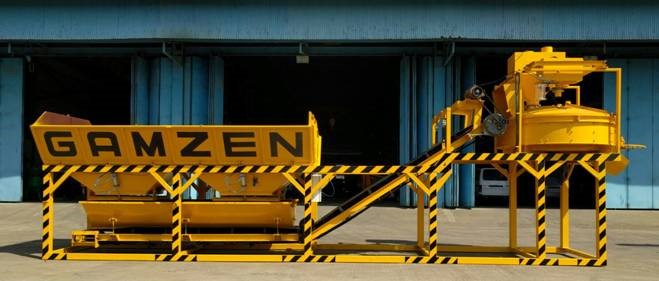The Future of Concrete Production: How Batching Plants are Revolutionizing the Industry
Concrete, one of the most essential materials in the construction industry, has been used for centuries due to its strength and durability. From towering skyscrapers to sturdy bridges, concrete plays a crucial role in shaping our modern infrastructure. However, the traditional methods of concrete production have often posed challenges in terms of efficiency, quality control, and environmental impact. In recent years, the introduction of batching plants has brought about a revolution in the concrete production process, offering significant improvements in various aspects of the industry.
Understanding Concrete Production
Before delving into the advancements in concrete production, it is important to understand what concrete is and why it is so vital in construction. Concrete is a composite material composed of cement, water, aggregates (such as sand and gravel), and additives. It is renowned for its compressive strength and versatility, making it a preferred choice for various construction projects worldwide. Whether it’s building foundations, roads, or even decorative structures, concrete provides the necessary stability and endurance.
Traditional Concrete Production Methods
Traditionally, concrete was produced either through manual mixing or by relying on ready-mix concrete suppliers. Manual mixing involved labor-intensive processes, where workers manually combined the ingredients to create the desired concrete mixture. While this method allowed for flexibility, it often resulted in inconsistencies in quality and increased the risk of human error.
On the other hand, ready-mix concrete suppliers offered pre-mixed concrete that could be delivered directly to construction sites. Although this approach ensured consistent quality, it limited customization options and required careful planning and coordination with the supplier.
The Need for Innovation in Concrete Production
As the construction industry continues to grow, the need for more efficient and sustainable concrete production methods has become evident. Traditional methods not only consume significant amounts of energy and water but also generate large quantities of waste materials. The environmental impact of such practices, coupled with the demand for increased productivity and cost-effectiveness, has called for innovation in the industry.
Introduction to Batching Plants
In recent years, batching plants have emerged as a game-changer in the concrete production landscape. A batching plant, also known as a concrete batching plant or a concrete mixing plant, is a facility that combines various ingredients in predetermined proportions to produce concrete. These ingredients include cement, water, aggregates, and often additional admixtures for specific properties.
A typical batching plant consists of storage bins for aggregates, a cement silo, a water storage tank, conveyors, weighing systems, and mixers. The process begins with the precise measurement of each ingredient, ensuring the desired proportions are maintained. The ingredients are then mixed thoroughly to achieve a consistent and homogeneous mixture. Batching plants can be stationary or mobile, depending on the requirements of the project.
Advancements in Batching Plant Technology
The evolution of batching plant technology has paved the way for numerous advancements, significantly improving the efficiency and sustainability of concrete production. One notable advancement is the integration of automated systems, which streamline the entire production process. Automated batching plants eliminate the reliance on manual labor, reducing the risk of human error and enhancing productivity.
Furthermore, modern batching plants can be seamlessly integrated with digital platforms, allowing for real-time monitoring and control. This integration enables construction professionals to track the production progress, monitor ingredient levels, and make adjustments remotely. Such digitization brings transparency and efficiency to the concrete production process.
Sustainability has also become a focal point in the development of batching plant technology. Many modern plants incorporate sustainable practices, such as recycling water used in the production process and utilizing alternative materials like fly ash or slag as partial replacements for cement. These eco-friendly initiatives not only reduce the environmental footprint but also contribute to the overall sustainability of construction projects.
Benefits of Batching Plants in the Construction Industry
The adoption of batching plants in the construction industry has yielded several notable benefits. First and foremost, the use of batching plants enhances quality control. With precise measurement and automated mixing, the consistency and uniformity of the concrete mixture are significantly improved. This ensures that the resulting concrete meets the required standards and specifications.
Batching plants also contribute to increased productivity. The automated nature of these plants allows for faster production cycles, reducing the time required to complete a project. Additionally, the ability to customize the concrete mixture on-site provides flexibility, catering to specific project requirements.
Reduced wastage is another advantage of batching plants. By accurately measuring and dispensing the ingredients, wastage is minimized compared to manual mixing or relying on ready-mix suppliers. This reduction in waste not only lowers costs but also contributes to a more sustainable construction industry.
Furthermore, batching plants offer flexibility in terms of customization. Construction professionals can adjust the concrete mix proportions, such as changing the strength or adding admixtures, to meet project specifications. This adaptability ensures that the resulting concrete is optimized for the specific application, enhancing durability and performance.
Future Trends in Concrete Production
The future of concrete production is poised for further innovation, driven by emerging technologies and evolving industry requirements. One notable trend is the integration of the Internet of Things (IoT) into batching plants. IoT enables real-time data collection and analysis, facilitating predictive maintenance, optimizing energy consumption, and enhancing overall efficiency.
Artificial intelligence (AI) is also making its way into the concrete production process. AI algorithms can analyze vast amounts of data, optimizing the concrete mixture based on desired strength, durability, and environmental factors. This intelligent decision-making ensures that the resulting concrete meets the specific project requirements.
Moreover, the use of alternative materials in concrete production is gaining momentum. Researchers are exploring innovative solutions, such as using recycled materials or industrial by-products as substitutes for traditional ingredients. This not only reduces the reliance on natural resources but also minimizes waste and environmental impact.
Challenges and Limitations of Batching Plants
While batching plants offer significant advantages, there are challenges and limitations to consider. One primary challenge is the initial setup cost. Batching plants require a substantial investment in infrastructure, machinery, and automation systems. However, it’s important to note that the long-term benefits in terms of productivity, quality control, and sustainability often outweigh the initial costs.
Maintenance and operation of batching plants can also be demanding. Regular inspections, calibration of equipment, and maintenance of electrical and mechanical components are essential to ensure optimal performance. Adequate training and skilled personnel are required to operate and maintain batching plants effectively.
Additionally, the adaptability of batching plants to project requirements can be a limitation. Large-scale projects with high concrete demand can benefit greatly from batching plants. However, smaller-scale projects with limited concrete needs may find it more cost-effective to rely on ready-mix suppliers or alternative methods.
Conclusion
The introduction of batching plants has revolutionized the concrete production industry. These technologically advanced facilities offer improved quality control, increased productivity, reduced wastage, and customization options. With advancements in automation, integration with digital platforms, and sustainable practices, batching plants are reshaping the way concrete is produced.
As the industry looks toward the future, trends like IoT integration, AI optimization, and the use of alternative materials will further enhance the efficiency, sustainability, and performance of concrete production. Despite challenges such as setup costs, maintenance, and adaptability, the benefits of batching plants make them a valuable asset in the construction industry’s pursuit of high-quality, eco-friendly, and cost-effective concrete production.
FAQs (Frequently Asked Questions)
- How do batching plants contribute to sustainability?
Answer: Batching plants incorporate sustainable practices such as recycling water and using alternative materials, reducing environmental impact and conserving resources.
- Can batching plants be used for small-scale projects?
Answer: While batching plants are commonly used for large-scale projects, they can be adapted to suit smaller projects depending on concrete demand and project specifications.
- Are batching plants suitable for remote construction sites?
Answer: Yes, batching plants can be designed to be mobile and transported to remote construction sites, ensuring a steady supply of high-quality concrete.
- What are the potential risks associated with using batching plants?
Answer: Risks include initial setup costs, maintenance requirements, and the need for skilled operators. However, proper planning and maintenance can mitigate these risks effectively.
- Are there any regulations governing the use of batching plants in construction?
Answer: Regulations may vary depending on the jurisdiction, but in general, batching plants must comply with environmental, safety, and quality standards set by local authorities.

